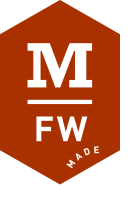This is an article I wrote which appeared in the November 2012 issue of Auto Recycler’s Toolbox
In last month’s issue, I gave you a brief overview of website strategies – from the initial meeting and planning to creating targeted keywords for your customers, to creating content that is unique and relevant to your potential customers, to converting website visitors to sales and leads, and to methods for tracking success.
In this issue, and in future issues, I will go into more detail about each of these different aspects of making your business website work better.
It Starts With a Search…
Let’s talk about creating content. When you go to Google to find something, you begin by doing a search. You might be looking for the answer to a question or looking to buy an item. Have you ever caught yourself clicking a search result, and almost immediately, hitting your “back” button to return to the search results page? Why did you do it? The most likely reason is that the content was either not presented in an appealing way or not relevant to your search.
You are not the only person who bails out on a page that fails to deliver what you are looking for. Some of your company’s website visitors probably bail out, too. They represent lost sales. So, how do we get visitors who are qualified customers to remain on the website and make a purchase? Let’s break it down into three items: layout, readability and quality.
Psychology of Layout
Experts have done many studies to learn how users interact with sites. Using eye-tracking software, experts have determined how users interact with commercial sites. This knowledge helps good designers layout sites in ways that make it easy for users to find what they are looking for.
There is a method to design and layout of a website to maximize readership and conversion rates [1] . Generally, a user’s eye starts at the top left corner of the screen where the logo is located on many sites and pans from left to right, then diagonally down to the bottom left, and then across to the right side again. The typical eye-tracking pattern looks like a “Z”.
Knowing how a typical user looks at your site can help you make sure that your most important images and offers and calls to action[2] are placed properly along the path that a user’s eye typically follows. Generally, you will place your logo in the top left, phone number in the top right, important bullet with sales message in the center of the screen, and big call to action in the lower right.
Optimal Readability of Your Content
The second aspect to creating a successful web page is understanding how users read and scan your content. Generally, users scan. They won’t usually read long blocks of text. Structure your text to make it easy to scan: break up your text by using bullet points, bold important words or phrases, add graphical elements, and add links that stand out. Make it easy. Don’t overwhelm your visitor. Instead, lay the site out so that the eye of a visitor is immediately drawn to the information that brought them to the site. If a user lands on your page, you want them to find what they came looking for – fast – or else they will hit that dreaded back button and head off to a competitor’s site. If this page is about used Ford motors, you can significantly help your conversion rate by adding a strong call to action, such as “Find Your Ford Motor” or “Buy a Motor”. We know the user is looking for a Ford motor, so if they see a big bright yellow button that says “FORD MOTORS!” your visitor will click and be one step closer to making a purchase..
Quality Content Brings Quality Customers
Have you ever searched for something online, found a website in the search results, clicked through, read the first few lines, and thought to yourself: “This was this written by a third grader” or “Does the person who wrote this speak American English?” You’d be surprised how many people put up bad content on their website and wonder why it performs so poorly.
The writing on your website is a representation of you and of your business. Spelling and grammatical errors are just the tip of the iceberg when it comes to quality content. When I talk about quality content, I’m talking about content that grabs attention and that is highly relevant to what that visitor came looking for. Quality content leads them to take an action. It engages your potential customer and creates an impression that makes them confident in you and your company. Quality content answers their question in as few words as possible.
You should also know that the more content you have on your website (pages, articles, blog posts, PDF white papers and so on), the more you will show up in search results. Think of web content as a casting net. The more content, the bigger the net, and the more fish you’ll bring in. Therefore, you should be creating content for all the makes, models and parts you sell. On each one of these pages, make sure you have a clear message and a bold call to action to convert as many visitors as possible to sales.
It is fun to see even small yards outdoing their larger competitors on the web. Smart beats big in the online world. Even a little yard can bank serious parts sales by using the Internet the right way.
1 Conversion Rate – A metric that tracks how many of your website’s visitors take a specific action, such as filling out a contact/lead form, making a purchase, signing up for your newsletter or downloading more information. It should be your goal to convert as many visitors as possible.
2 Call to Action – A term that describes an image or headline that grabs the a visitor’s attention and directs him to take a specific action. For example, a starburst that says “Sign Up for our free newsletter” and links to the signup page.






